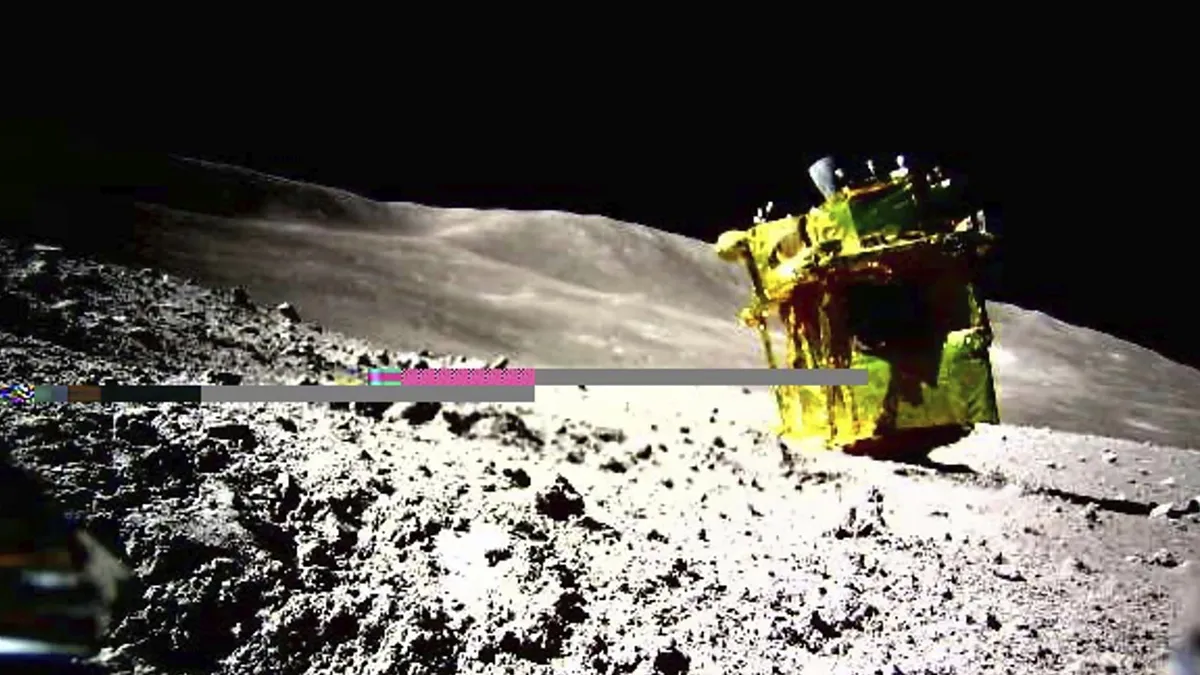As I wrote recently, Japan’s SLIM (Smart Lander for Investigating Moon) probe somewhat embarrassingly landed upside-down. But, while it’s fun to have a bit of a giggle at a mishap in what is, after all, a very tricky business, we shouldn’t lose sight of what the Japanese got very, very right. Nor the potential scientific cornucopia it may yet open.
After all, remember what a disaster the Hubble space telescope was, at first. A miniscule flaw in the telescope’s primary mirror rendered it useless, temporarily: engineers soon devised a fix and, after a complex and challenging repair mission, the telescope was in perfect working order. Besides generating some of the most stunning astronomical images ever seen, it helped unlock the secrets of the universe.
SLIM is already proving its worth, despite the rather ignominious setback of, well, landing upside-down.
Firstly, it should be remembered that the probe landed with extraordinary precision (even if the wrong way up). Most such missions are counted a success if they get within 10 kilometres of their target. SLIM’s controllers were aiming for within 100 metres – they landed within 50, in an area littered with rocks rather than the preferred (relatively) flat surfaces.
If not for the loss of one engine (which is what caused the probe to flip), it is believed it would have landed mere metres from its target.
Unfortunately, its inverted position means that its solar panels were initially barely able to provide the necessary power. But engineers were able to get it up and running and it’s already exceeding mission expectations.
An unmanned lunar spacecraft captured and transmitted data analyzing 10 lunar rocks, a greater-than-expected achievement that could help provide clues about the origin of the moon, a Japan space agency official said Wednesday.
For four days, the Smart Lander for Investigating Moon, or SLIM – which landed on the moon last month – examined lunar rocks and used its multiband spectral camera to study rock composition, Japan Aerospace Exploration Agency [JAXA] project manager Shinichiro Sakai said […]
A black-and-white photo transmitted soon after SLIM was reactivated showed the bumpy lunar surface, including six rocks. The craft eventually obtained data from 10 rocks altogether, all of which were given the names of dog breeds, such as Akitainu, Beagle and Shibainu.
No doubt JAXA will soon be turning out suitably kawaii (cute) mascots of the rocks.
But have no doubt the probe has a serious scientific purpose.
“We are hoping that the rock analysis will lead us to the origin of the moon,” Sakai said. By comparing the mineral compositions of moon rocks and those of Earth, they could find out if the rocks have common elements, he said. According to the “giant-impact” hypothesis, the moon is believed to have formed as a result of the Earth colliding with another planet, and a smaller mass spinning off of them.
BFD readers may also recall that recently, scientists mapped what are believed to be gargantuan fragments of the putative impacting planet (named Theia) still buried deep in the Earth’s mantle.
The JAXA team expected SLIM to study and analyze only one rock, so having data on 10 rocks was a cause for celebration, propelling the team to pursue studying the moon’s origins.
Unfortunately, JAXA’s scientists will have to pause the probe’s work for the next fortnight, as it’s plunged into darkness once again.
SLIM is currently “hibernating” in another lunar night that will last until late this month. It remains unknown if the probe and its spectroscope will survive the severe cold night temperatures and be able to “wake up” once sunlight returns […]
SLIM carried two autonomous probes that were released just before touchdown, recording the landing, surroundings and other lunar data. The two small probes completed their mission of recording SLIM’s initial work and stopped working.
Denison Bulletin-Review
It looks like Japan’s nascent space industry will be able to hold its head up – the right way up – yet.









